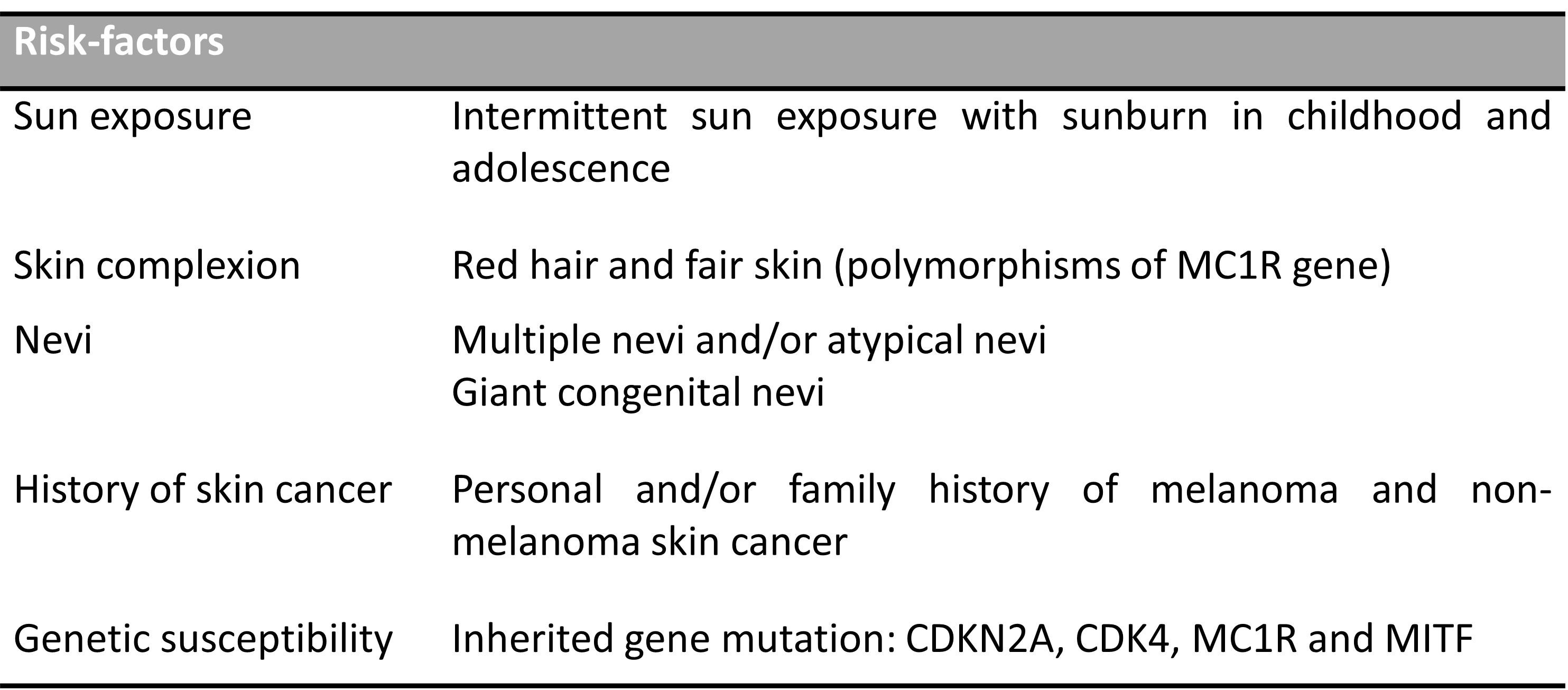The incidence of melanoma is increasing at a greater rate than the other types of cancer mostly in white skin populations.
According to the latest statistics, cutaneous melanoma is currently the sixth most common type of cancer in Europe, with more than 144,000 new cases diagnosed in 2018. Fortunately, melanoma may be cured if detected and treated at an early stage.
Several risk factors considered to be significant in the development of cutaneous melanoma and have been identified by epidemiologic studies. The knowledge of these risk factors is essential for clinicians since it helps to identify which patient has more chances to develop skin cancer including cutaneous melanoma.
Some of the risk factors have been clearly demonstrated, comprising a complex interaction of environmental and endogenous (genetics) factors. Such factors include a fair complexion (red hair and fair skin),a positive family history of melanoma, prior melanoma, more than 50 atypical moles or more than five dysplastic naevi, large congenital naevi, and inherited mutations of the CDKN2A gene and others. The most important exogenous factor for developing melanoma is UV exposure, particularly intermittent sun exposure.
The presence of known risk factors represents a considerable psychological burden to the person and a financial burden to healthcare system that stands with regular check-ups, surgical excisions, and pathology analysis.
The iToBoS aims to develop a machine learning analysis tool to integrate these various data sources for the first time. The combination of all this personalized information, as clinical data (including the risk factors), genetics data and imaging data will result in an accurate, detailed, and structured assessment of the patient condition improving diagnosis and clinical decision.

Table 1. The risk-factors that increases the chances for developing melanoma.
Intelligent Total Body Scanner (iToBoS) System is a larger international project for developing an artificial intelligence (AI) assisted diagnostic platform for the early detection of melanoma. This project involves 18 partners, who are all located within the European Union (including UK and Israel), except for The University of Queensland, located in Brisbane, Australia. It has received funding from the European Union’s Horizons 2020 Innovative funding program, under the Health, Demographic Change and Wellbeing section.
This platform will include a total body scanner, powered with high-resolution cameras, and a Computer Aided Diagnostics (CAD) tool to combine data sources such medical records, genomics data and imaging data. The iToBoS will be designed with the purpose of developing tools for supporting clinical decisions by integrating various diagnostic data for early detection of melanoma.
G. Rezze, J. Malvehy. Hospital Clinic of Barcelona, IDIBAPS
References:
Conforti C, Zalaudek I. Epidemiology and Risk Factors of Melanoma: A Review. Dermatol PractConcept. 2021 Jul 1;11 (Suppl 1): e2021161S. doi: 10.5826/dpc.11S1a161S. PMID: 34447610; PMCID: PMC8366310.
